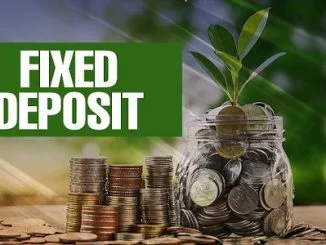
Fixed Deposits are one of India’s most preferred investment types, considering the assured returns these instruments provide. They are less risky and help individuals generate substantial wealth over time.
Since the rate of interest on these investments, such as the SBI FD interest rate remains constant throughout the tenure, you may think there are restrictions on maximizing wealth through FDs. However, this is not true. Along with the provision of liquidity, you can maximize your FD investments by following these steps:
Continue the FD Till its Maturity
Most individuals choose longer terms because the interest rates on Fixed Deposits are higher for longer terms, but they end up withdrawing their Fixed Deposits prematurely. This results in losses because you only get interest on premature withdrawals until the day you stay invested. Additionally, you will also have to pay a withdrawal penalty, which might drain your finances rather than increasing them.
Thus, it is recommended to stay invested until the maturity of your FD account. This will help you earn maximum returns over the long-term.
Look Beyond the Offerings of Traditional Banks
In comparison to bank fixed deposits, corporate fixed deposits are an emerging concept in India. Interest rates on corporate FDs are generally 1-4% higher. These are provided by NBFCs or other financial institutions that are authorized to issue fixed deposits. While 1-4% may not appear to be as high at first glance, the returns over an extended maturity period show a significant difference.
Furthermore, if your investment corpus is large, a higher interest rate will significantly increase your savings. As a result, corporate fixed deposits are an excellent way to beat the high inflation rate.
To make an informed decision, consider assessing different FD plans through Bajaj MARKETS. This is a diversified platform featuring different FD plans offered by leading banks and financial institutions of the country. You can assess these plans and compare their interest rates to decide on a plan that best suits your requirements.
Alternatively, you can look out for SBI FD interest rate and seek plans that offer returns at the maximum interest rates.
Consider Adopting the Ladder Investment Strategy
A ladder investment strategy is one in which you have Fixed Deposits with varying maturity dates. This way, you can ensure adequate liquidity on your investments. You can also benefit from higher interest rates by making longer-term deposits. In addition, keeping your money parked away at different FD accounts will also lower your tax liability, as the threshold limit for TDS on FD interest income is fixed at Rs.40,000. So, if your income from a 1 year FD interest rate from a particular account is less than Rs.40,000, you will not have to pay any tax on that.
Assess Financial Institutions on the Credit Rating
CRISIL and ICRA credit ratings are important indicators of how reliable a fixed deposit is. The higher the rating, the more secure your investment will be.
However, note that the highest-rated FDs offer slightly lower returns than low-rated and comparatively risky ones. To maximize returns, however, one must not overlook safety and dependability. Choose instruments with high credit ratings and evaluate them based on your investment objectives and risk tolerance.
Invest in Cumulative Fixed Deposits
When it comes to cumulative FDs, the interest is reinvested rather than paid out. Re-investing earned interest gives you a compounding effect on your Fixed Deposit investments. This is a good way to maximize the returns over an extended tenure.
As opposed to cumulative FDs, non-cumulative Fixed Deposits pay out interest on a regular basis. As a result, they have no compounding effect. Non-cumulative Fixed Deposits, on the other hand, are a good way to get regular income, as they provide regular interest payouts.
Avoid Liquidating Your Account
While it may seem comforting to liquidate to your FDs in times of financial emergency, premature liquidation will reduce your earnings from the amount invested. You will also be penalized for this.
An overdraft facility on your Fixed Deposit protects you in these situations. It will let you borrow from your FD and only pay interest on the amount borrowed based on the number of days it was used. Some banks and financial institutions could allow you to withdraw up to 75% of the amount invested as an overdraft.
Alternatively, you can also balance risk and returns on your SBI FD interest rate by spreading across your investments in smaller chunks. However, before investing in FDs, consider your financial goals and risk-taking capacity. You should also make out ways to limit your tax outgo, considering these investments attract TDS. This will help you maximize returns and meet your big-ticket financial obligations.





Be the first to comment